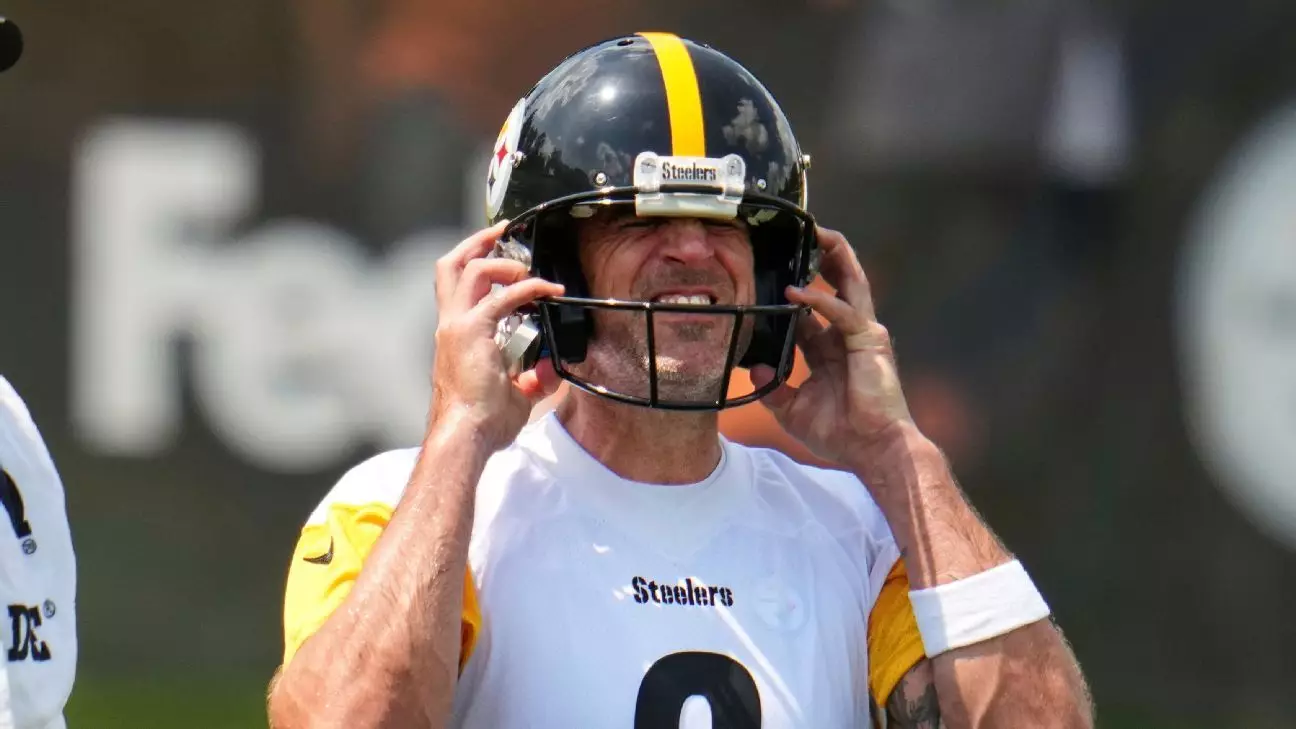In the relentless world of professional sports, athletes often find themselves caught between tradition and innovation. Aaron Rodgers’ recent experience with helmet alterations exemplifies this tension. Known for his dedication and meticulousness, Rodgers’ frustration with the new helmet standards underscores an essential truth: success in sports—and in life—demands adaptability, but also a recognition of one’s own needs and comfort. His candid admission of dissatisfaction with the new helmet design reflects an important sentiment: even in pursuit of safety, athletes must prioritize their own well-being and trust their instincts. This underscores the fact that growth isn’t just about conforming to external standards but also about listening to one’s internal compass. In a broader sense, resilience is ultimately about navigating internal conflicts while staying committed to the goal, despite discomfort.
Sticking with a familiar tool—like Rodgers’ long-time helmet—symbolizes a broader preference for stability and familiarity. Yet, safety regulations necessitate change, challenging athletes to reconcile institutional demands with personal comfort. Rodgers’ openness about his struggle resonates widely, revealing that real resilience isn’t blind conformity but a balanced negotiation between external requirements and internal well-being. His willingness to voice dissatisfaction is a testament to authentic resilience—recognizing what doesn’t work and striving for solutions that respect both safety and individual preference. This mindset becomes a potent lesson for anyone facing change: growth isn’t just about acceptance but about active engagement and self-advocacy.
The Reality of Physical Setbacks and Mental Toughness
While Rodgers grapples with helmet discomfort, he also encounters the unpredictable hazards of his sport firsthand—an injury caused by a rookie player’s unlucky step. His quick recovery, despite the accidental contact, highlights a critical trait among top-tier athletes: mental toughness. The fact that Rodgers quickly resumed practice, even after a minor calf injury and scrapes, illustrates resilience in action. It’s a reminder that in high-pressure settings, setbacks come unbidden, yet true competitors view these obstacles as opportunities to demonstrate perseverance.
Interestingly, Rodgers’ prior injury history—particularly his torn Achilles—adds layers to his current approach. His careful attention to recovery, evidenced by wrapping his calf and continuing to push through discomfort, exemplifies a mindset rooted in resilience and determination. Physical setbacks are inevitable at the elite level, but how athletes respond—maintaining focus, managing pain, and remaining committed—differentiates mediocrity from greatness. Rodgers’ attitude indicates that setbacks are merely detours, not dead ends. Leaders in any field understand that recovery and persistence forge character, and Rodgers’ calm reaction in the face of minor injuries exemplifies this principle.
The New Generation: Facing Unexpected Challenges
Meanwhile, rookie quarterback Will Howard embodies another facet of resilience—adapting quickly to unforeseen adversity. His freak finger injury from a simple practice drill underscores how fragile even routine moments can be. Howard’s candid reflection about his injury, his awareness of the need to adjust his plans, and his optimistic outlook despite setbacks all reveal a vital truth: resilience is about mental agility as much as physical toughness. Accepting temporary setbacks without losing sight of the long-term goal demonstrates emotional maturity—a trait that separates prepared athletes from those easily disheartened.
What makes Howard’s story compelling is his acceptance of current limitations without succumbing to frustration or despair. His mention of “taking it day by day” speaks to an adaptive approach—focusing on what can be controlled rather than dwelling on what’s lost. This perspective is essential not only in sports but also in broader life contexts. Resilience involves patience, strategic thinking, and unwavering focus, even when outcomes aren’t immediately visible. Howard’s readiness to respond to adversity with a proactive attitude exemplifies the mindset necessary for long-term success and growth.
Safety and Stress: Redefining the Athletic Experience
Rodgers’ helmet dilemma signals a larger shift within professional sports: prioritizing safety without sacrificing performance. The tension between tradition and innovation reflects a broader societal debate—how do we balance progress with individual comfort? For athletes, such transitions can feel intrusive, even inhibiting, especially when they threaten long-standing routines. Rodgers’ vocal frustrations serve as a reminder that safety measures must also consider human factors—comfort, usability, psychological well-being—if they are truly to succeed.
The incident with Rodgers and Howard’s injury also highlights an intrinsic truth: sport is unpredictable, and resilience is often tested unexpectedly. Whether it’s an uncomfortable helmet or an accidental injury, athletes must learn to adapt swiftly and maintain focus. Their responses influence not only their physical recovery but also their mental state and motivation. These challenges, while frustrating, ultimately serve as catalysts for developing deeper resilience, teaching athletes to find strength amid adversity.
In the end, resilience isn’t about avoiding setbacks but about redefining how we respond to them. The stories of Rodgers and Howard elaborate a broader narrative—one in which adaptability, perseverance, and self-awareness are the real hallmarks of athletic excellence. For anyone striving to overcome obstacles, these narratives serve as powerful reminders: your capacity to adapt and bounce back defines your true strength.

